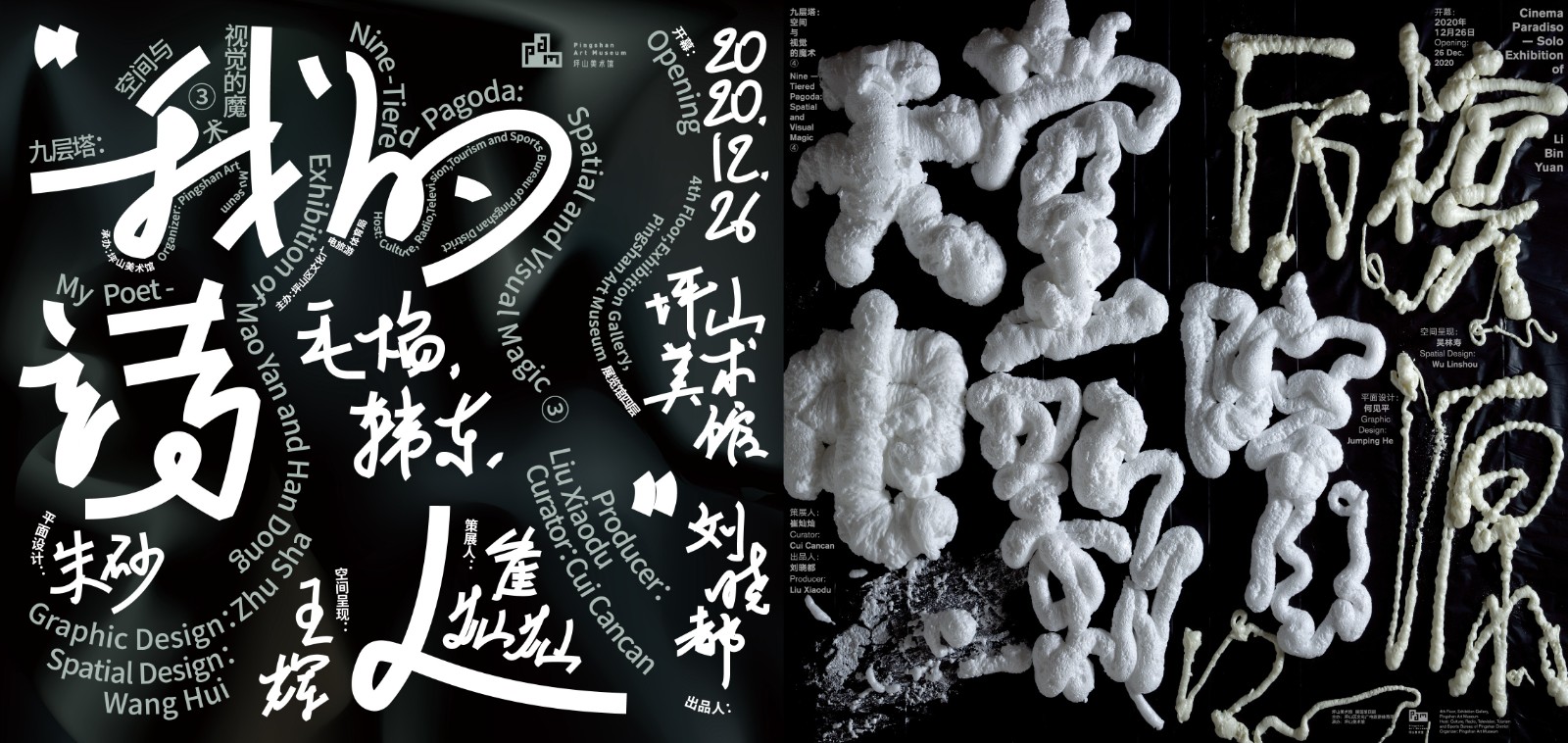
Nine-Tiered Pagoda: Spatial and Visual Magic, launched by curator Cui Cancan and architect Liu Xiaodu in 2020 at Pingshan Art Museum, is a hands-on project that mixes ideas, methodologies and tools. It's not only a workshop for cross-disciplinary art, but also a trial for artists, architects and designers to cooperate and expand their development realms together.
Nine-Tiered Pagoda: Spatial and Visual Magic is a cross-disciplinary event that represents an unprecedented direction and form of exhibition in China. Nine (groups of) artists will provide their works as the basis of the material for the exhibition. Besides, nine architects and nine designers will also join to form together in nine temporary teams, hence the cooperation among artists, architects and designers. There is no ‘priority’ or ‘center’ in the exhibition, only a division of labor and collaboration, presenting nine individual exhibitions of a brand-new type.
As an ancient Chinese architectural building, ‘Pagoda’ is a special structure, with each tier telling a different story. These stories, spaces, and designs are closely intertwined with each other into a superimposed whole, formulating the external image and spiritual core of the exhibition.
Nine-Tiered Pagoda: Spatial and Visual Magic ③
My Poet - Exhibition of Mao Yan and Han Dong
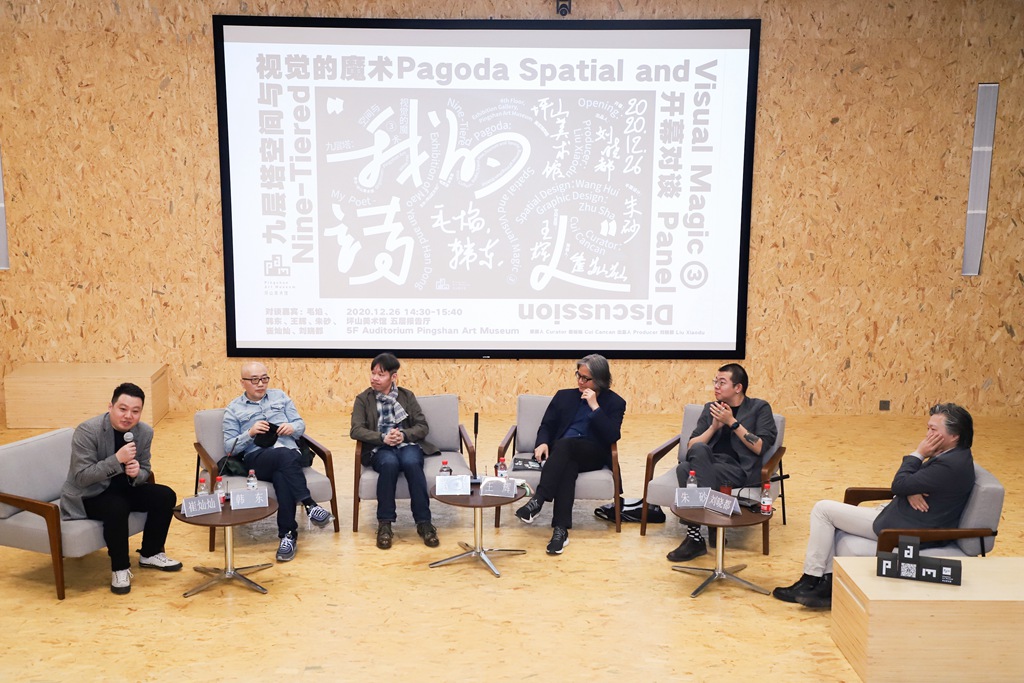
Panel Discussion on My Poet - Exhibition of Mao Yan and Han Dong
As the third of Nine-tiered Pagoda series, My Poet illustrates the interactions between Mao Yan and Han Dong. In 1997, Mao Yan painted a portrait of Han Dong, which embarked on a journey of interactions between painting and poetry as an example of integration of the history of art and literature. Centering on the paintings of Mao Yan, and poetry and maxims of Han Dong, the exhibition invites the architect Wang Hui to create a presentation for the space and the graphic designer Zhu Sha for the creation of posters and other visual content.
As the most prominent artist and poet in China, Mao Yan and Han Dong had similar daily routines and experience over the past 20 years of interactions. They talked about creation and appreciated each other. In profound interactions and frequent exchanges of thoughts, they recommended their favorite books, views and friends to each other. Their valuable experience of interaction seems to shine with the radiance of pure friendship in the ordinary and tedious reality.
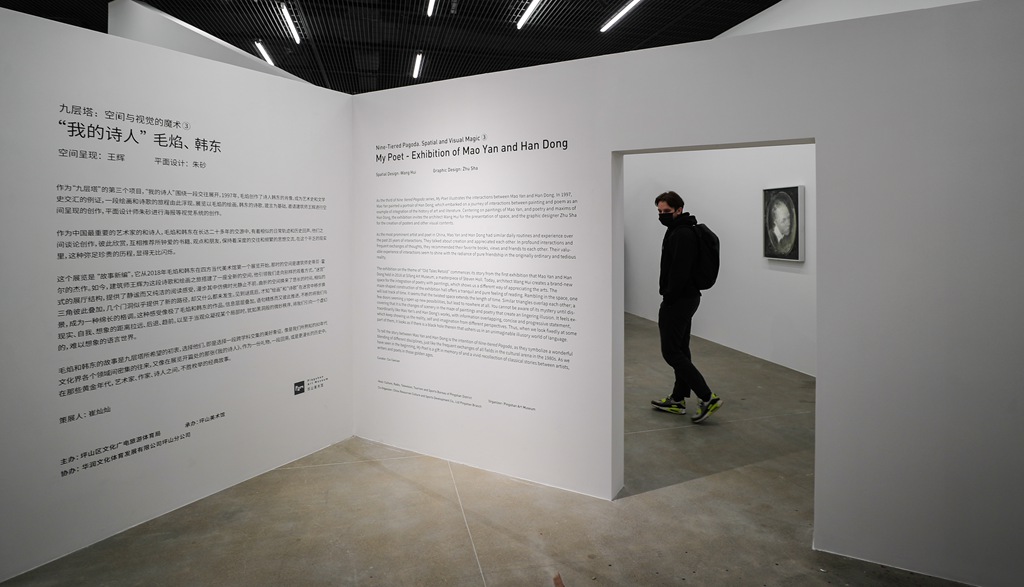
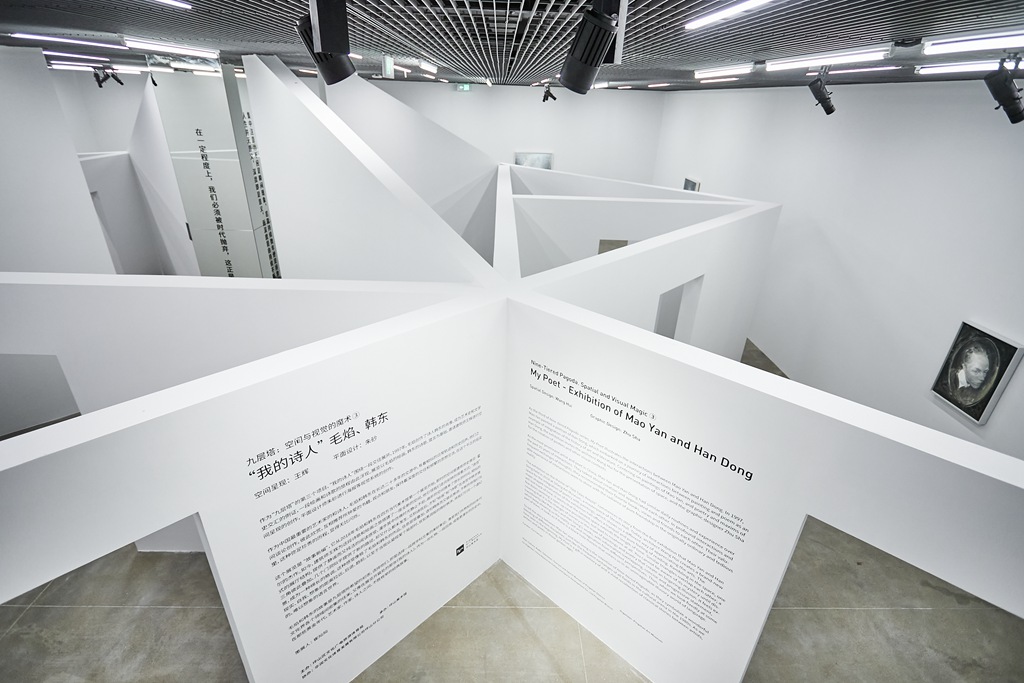
Exhibition View of My Poet - Exhibition of Mao Yan and Han Dong
The exhibition on the theme of “Old Tales Retold” commences its story from the first exhibition that Mao Yan and Han Dong held in 2018 at Sifang Art Museum, a masterpiece of Steven Holl. Today, architect Wang Hui creates a brand-new space for the integration of poetry with paintings, which shows us a different way of appreciating the arts. The maze-shaped construction of the exhibition hall offers a tranquil and pure feeling for reading. Rambling in the space, one will lose track of time. It seems that the twisted space extends the length of time. Similar triangles overlap each other; a few doors seemingly open up new possibilities, but lead to nowhere at all. You cannot be aware of its mystery until discovering that it is the changes of scenery in the maze of the paintings and poetry that create a lingering illusion. It feels extraordinarily like Mao Yan’s and Han Dong’s works, with information overlapping, create a concise and progressive statement, which keeps showing us the reality, self and imagination from different perspectives. Thus, when we look fixedly at some part it looks as if there is a black hole therein that ushers us in an unimaginable illusory world of language.
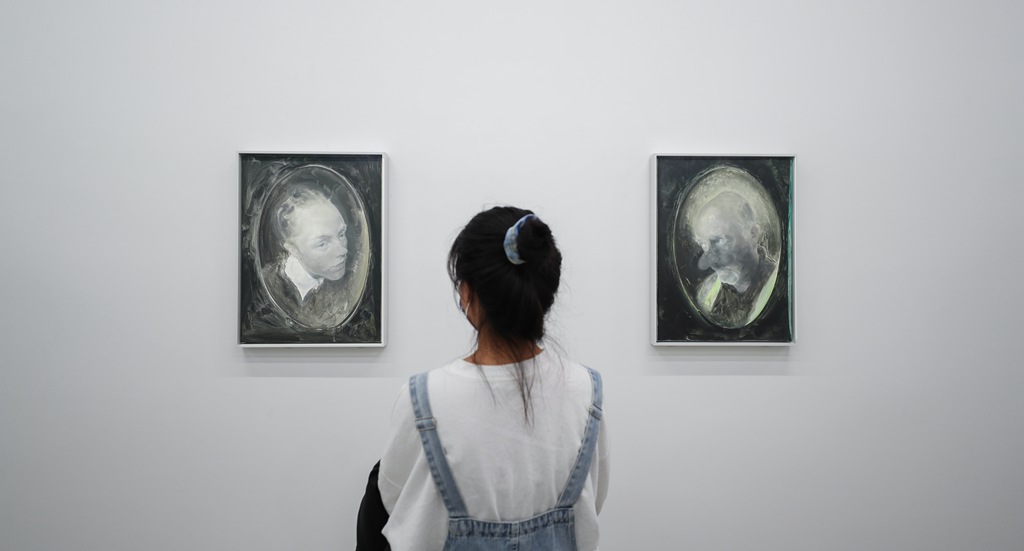
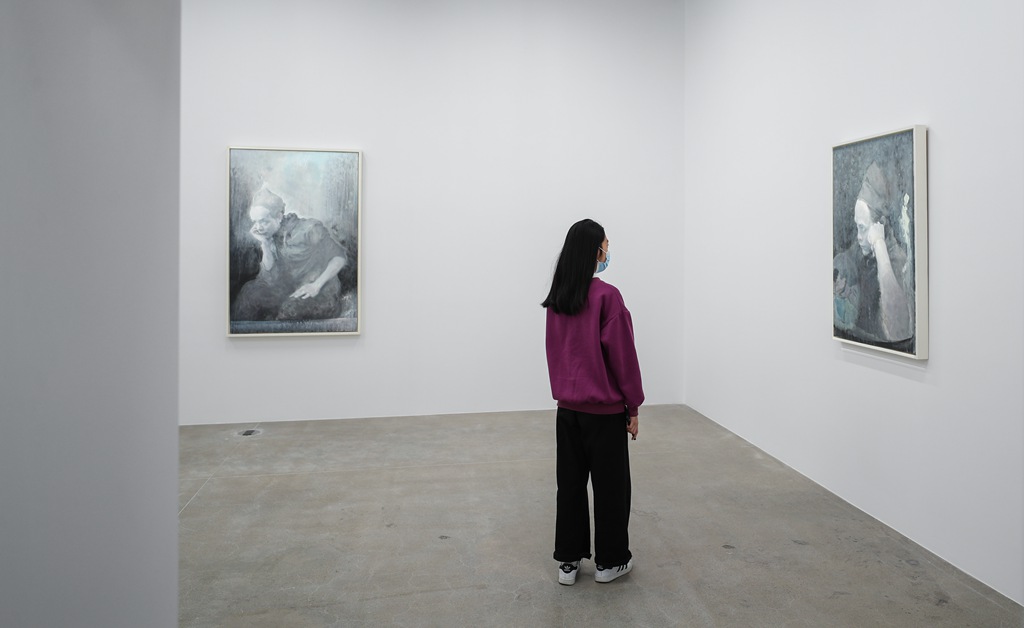
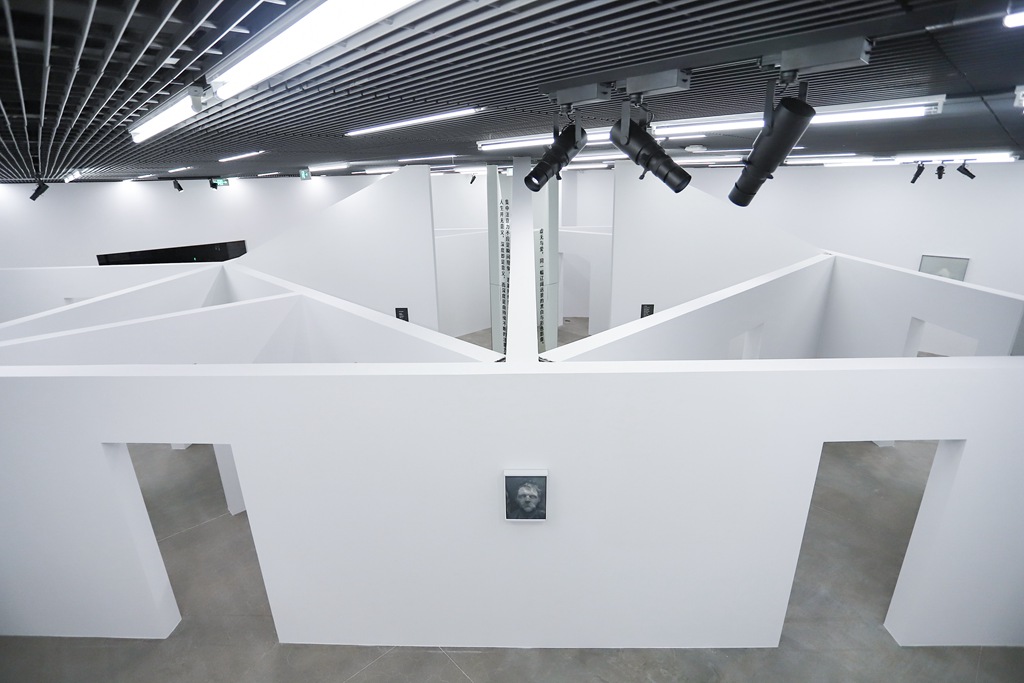
Exhibition View of My Poet - Exhibition of Mao Yan and Han Dong
To tell the story between Mao Yan and Han Dong is the intention of Nine-tiered Pagoda, as they symbolize a wonderful blending of different disciplines, just like the frequent exchanges of all fields in the cultural arena in the 1980s. As we have seen in the beginning, My Poet is a gift in memory of and a vivid recollection of classical stories between artists, writers and poets in the golden age.
By Curator: Cui Cancan
Nine-Tiered Pagoda: Spatial and Visual Magic ④
Cinema Paradiso: Solo Exhibition of Li Binyuan
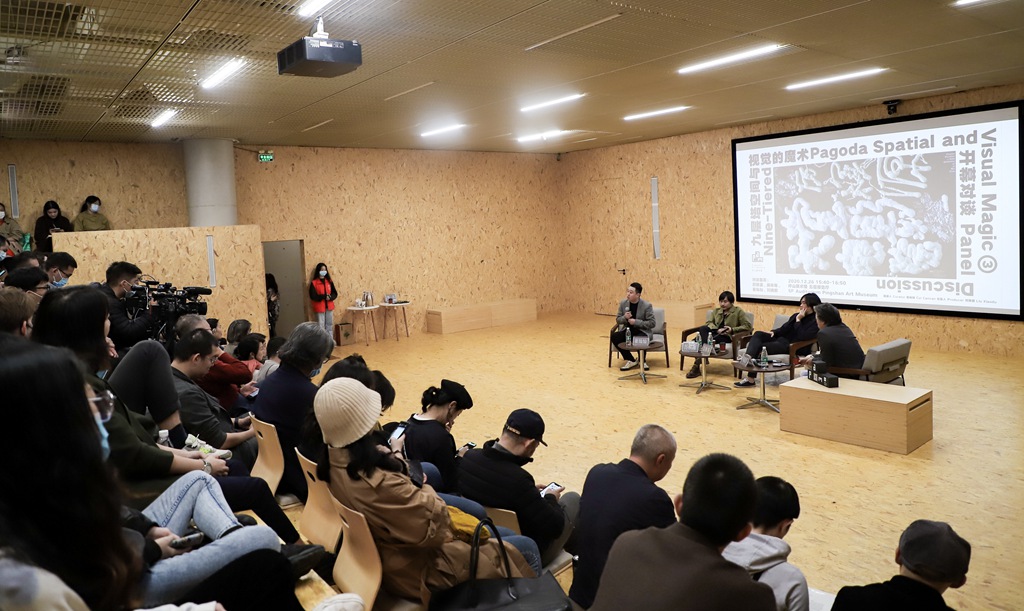
Panel Discussion on Cinema Paradiso: Solo Exhibition of Li Binyuan
As the fourth of the Nine-Tiered Pagoda series, Cinema Paradiso is a love poem or more precisely a depiction of emotion emblematic of what the creators pursue spiritually and emotionally in the field of art, architecture and design. Based on nine works of the performance artist Li Binyuan, the exhibition invites the architect Wu Linshou to create the space for presentation and the graphic designer He Jumping for the creation of posters and other visual content.
Cinema Paradiso is named after an Italian film which depicts the inexplicable bond of the protagonist Toto with cinema. Sweetness blended warmly with sadness is portrayed in the film to unleash its limitless appeal. Cinema Paradiso was a cinema in Sicily, the director’s hometown and has had multiple changes. The building, along with a lone plaza in a small town, recounts cross-generational friendship and the vicissitudes of film.
Cinema Paradiso is also one of Li’s biographic exhibitions. It recounts the chain of events in Li’s life — wandering from job to job, resting seabirds, church bells, a piece of native soil he tilled with hardship and the last letter left by his father before leaving the world. The recurring hometown impression, secrets from dreams and joy embedded deep in life make a complementary contrast with the rises and falls in Li’s life, one suffused with an affection for the past.
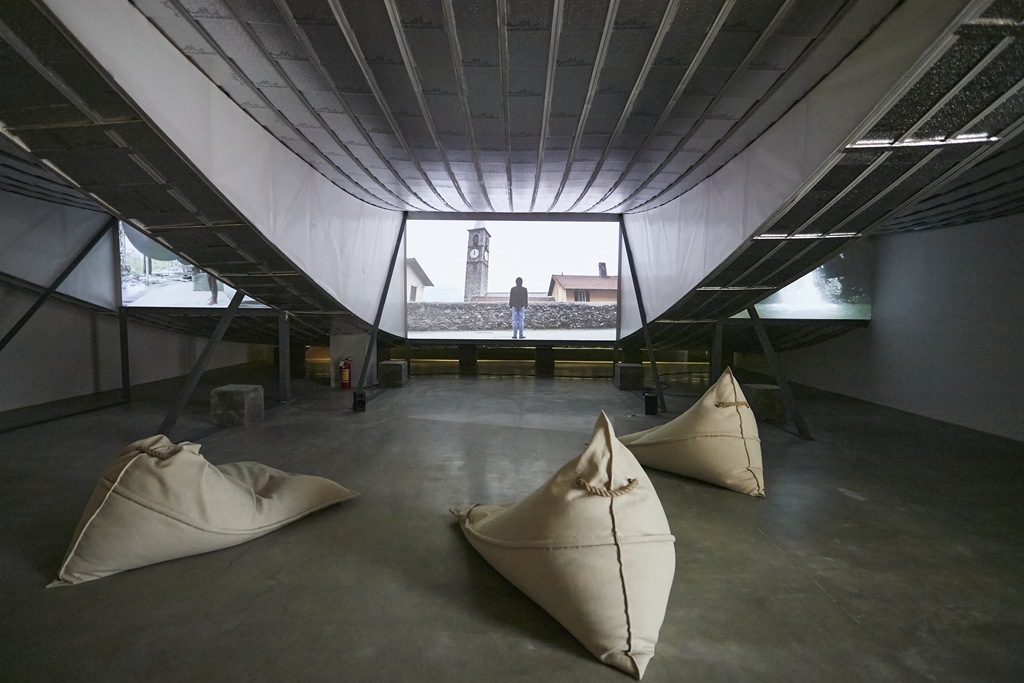

Exhibition View of Cinema Paradiso: Solo Exhibition of Li Binyuan
As is the case with the beams and dimness in the cinema, the nine visual works request similarly of the architect Wu for spatial representation. In the exhibition space he strikes the viewers with both joy and sadness by coupling a sacred quality with darkness as is signified by the hopefulness-hopelessness duo. On the one hand, the works reflect the many facets of worldly life — lanes, alleys and desolate slums in the cities and the fragmentary facets of the bustling human world. On the other hand, the works seem to draw people to their long sought-after heaven, an ideal one that an outdoor cinema is provided with. The two worlds seem to be separated from each other by the two bulky doors of the cinema we used to enter during childhood. When pushed open, they immediately usher us into a brilliant paradise following the several initial beams of dry and harsh light.
In Cinema Paradiso, the protagonist Dodo committed his future to art and struck up a cross-generational friendship with the senior projector Alfredo. We can see with clarity the figure of the projector in the performance artist, the architect and the designer. Years later, the projector pushed us away, seeing us bid farewell to worldly worries. For those in the worldly realm, a cinema or an art gallery means a heavenly oasis from which people can derive the warmest of all affections.
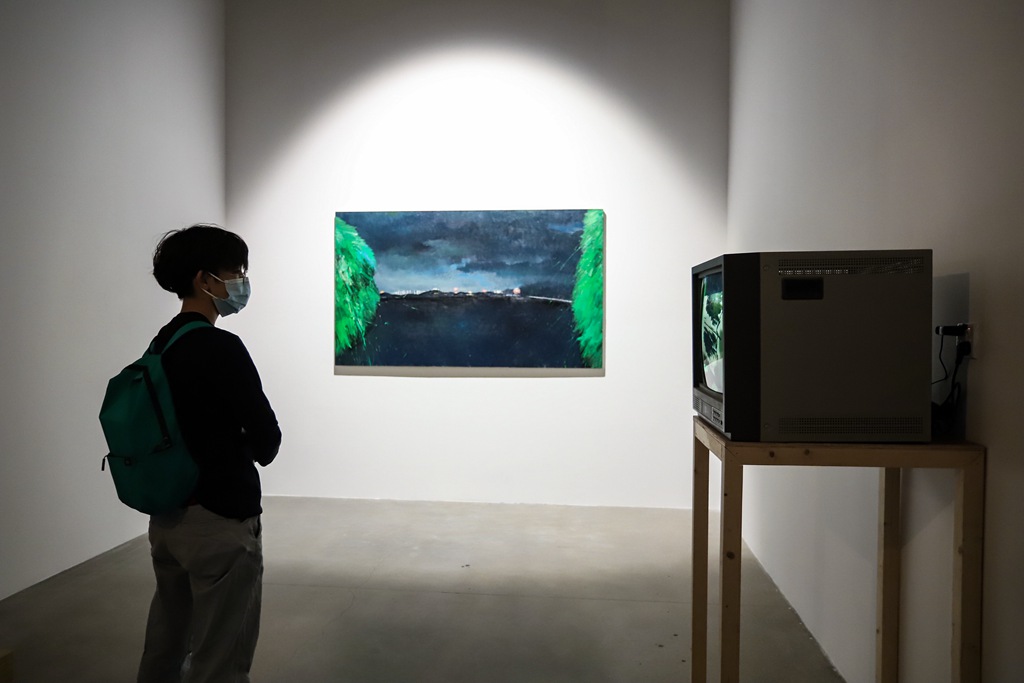
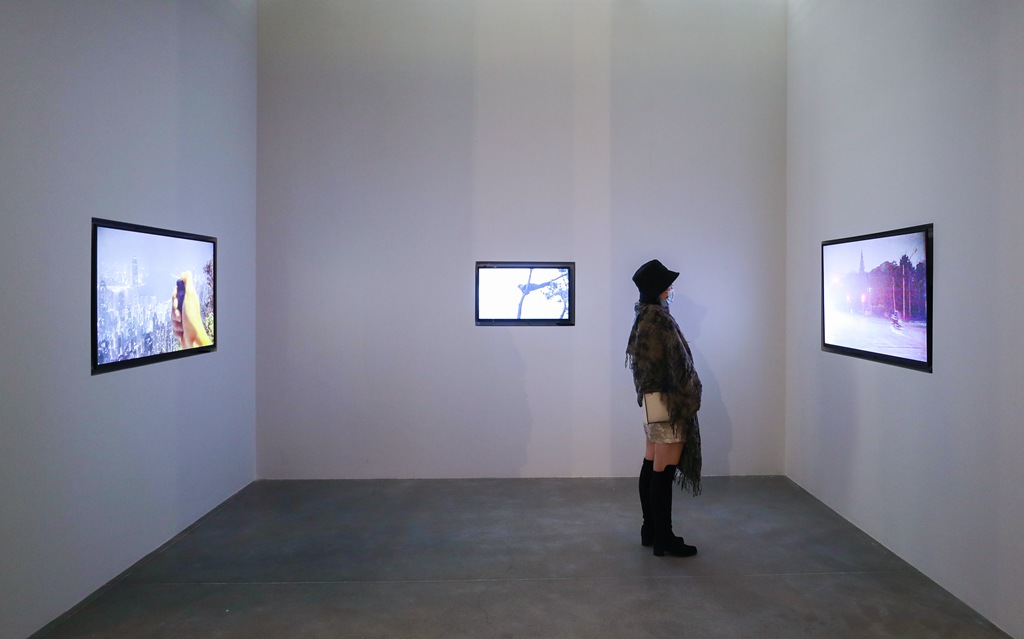
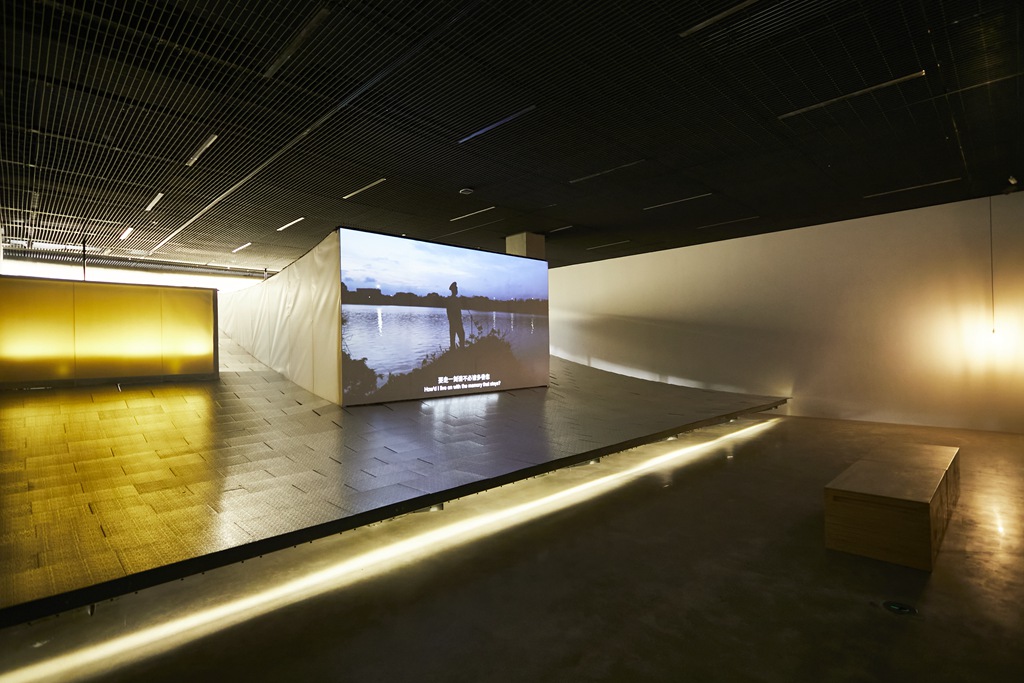
Exhibition View of Cinema Paradiso: Solo Exhibition of Li Binyuan
By Curator: Cui Cancan
About the exhibitions
Dates: 26 December, 2020 - 9 May, 2021
Venue: 4th Floor, Exhibition Gallery, Pingshan Art Museum
Courtesy of the artists and the organizer.




























